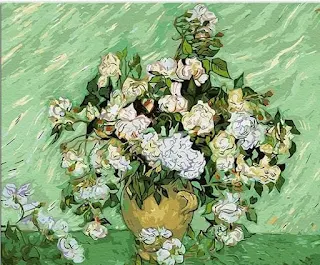Vincent van Gogh did not use paint-by-numbers. Paint-by-numbers kits, as we know them, were commercially developed and popularized in the mid-20th century, decades after van Gogh's death in 1890. The concept of pre-outlined areas with assigned numbers corresponding to specific colors is fundamentally different from van Gogh's artistic process.
Van Gogh's painting technique was characterized by:
- Impasto: He often applied paint thickly, creating texture and dimension with visible brushstrokes. This impasto technique is a hallmark of his style and would be impossible to replicate with the flat, numbered areas of a paint-by-numbers kit.
- Color Theory: Van Gogh was a master of color theory, using complementary and contrasting colors to evoke emotion and create visual impact. He carefully chose and mixed his paints to achieve specific effects, a process that goes far beyond simply filling in pre-determined areas.
- Expressive Brushwork: His brushstrokes are dynamic and expressive, conveying movement and energy. They are an integral part of the painting's composition and meaning, something that is entirely absent in paint-by-numbers.
- Working from Life and Memory: Van Gogh painted landscapes, still lifes, portraits, and self-portraits, often working en plein air (outdoors) or from memory. He observed his subjects closely and interpreted them through his unique artistic lens. This direct engagement with his subject matter is the antithesis of the pre-designed images used in paint-by-numbers.
The idea of Van Gogh using paint-by-numbers is a misconception, possibly arising from the simplified, mass-produced nature of paint-by-numbers kits compared to the perceived complexity of fine art. However, Van Gogh's seemingly simple, bold style is the result of intense observation, skilled technique, and a deeply personal artistic vision, none of which is related to the paint-by-numbers process.



